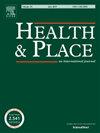医学培训途径和医生不足的地区:对在难以招聘和留住的地区工作的医生进行定性研究。
IF 4.1
2区 医学
Q1 PUBLIC, ENVIRONMENTAL & OCCUPATIONAL HEALTH
引用次数: 0
摘要
一些地区比其他地区更难以招募和留住医生来提供医疗服务。这些地区往往是农村、沿海、偏远、贫困或所有这些因素的综合,加剧了获得医疗保健的困难;我们把这些领域称为“治疗不足”。本文旨在描述在医生不足的地区工作的经验,重点探讨为什么医生在这些地方工作,以突出未来可能的招聘。它考虑:他们到达一个地区的路线和便利这些路线的司机;参与者生命中过渡到该区域的关键阶段;选择在该地区工作的机构——或者缺乏机构——参与其中。虽然以前的研究主要集中在推动劳动力流失的因素上,但我们在这里的工作是确定鼓励留住的因素,特别是在已知难以维持足够医疗劳动力的领域。通过对在这些领域工作的医生在案例研究站点的采访,我们概念化了如何需要理解在这些领域工作的经验,从而在医生的场所生活轨迹中揭示三个相互交织的因素——人、职业和场所。然后,我们将探讨如何妥协这些元素中的一个或多个,这些妥协的可接受性如何随着时间的推移而变化,以及如何协商和重新协商与医疗不足地区相关的能力,以便让那些搬到医疗不足地区的人想要留下来。这些发现对改善这些医疗不足地区的招聘和保留、卫生服务提供以及最终解决卫生不平等问题具有重要意义。本文章由计算机程序翻译,如有差异,请以英文原文为准。
Medical training pathways and underdoctored areas: a qualitative study of doctors working in areas that struggle to recruit and retain
Some areas struggle more than others to recruit and retain doctors to provide healthcare services. Often, these areas are rural, coastal, remote, deprived or a combination of all these factors, compounding difficulties in access to healthcare; we refer to these areas as ‘underdoctored’. This paper aims to describe experiences of working in underdoctored areas, with a focus on exploring why doctors work in these places to highlight what might enable future recruitment. It considers: the routes by which they arrived in an area and the drivers that facilitated those routes; the key stages in participants' lives at which transitions into the area were made; the agency – or lack thereof – that was involved in the choice to work in the area. While previous research has focused on factors driving workforce attrition, we work here to identify what encourages retention, particularly in areas that are known to have difficulties maintaining sufficient medical workforce. Drawing on interviews with doctors who work in these areas across case study sites, we conceptualise how there is a need to understand experiences of working in these areas to surface three intertwined elements – people, career, and place – within a doctors' place-life trajectory. We then explore how one or more of these elements might need to be compromised, how the acceptability of these compromises might change over time, and how the affordances associated with an underdoctored area can be negotiated and re-negotiated in order for those who move to an underdoctored area to want to stay. These findings have implications for improving recruitment and retention, health service provision, and ultimately, health inequalities in these underdoctored areas.
求助全文
通过发布文献求助,成功后即可免费获取论文全文。
去求助
来源期刊

Health & Place
PUBLIC, ENVIRONMENTAL & OCCUPATIONAL HEALTH-
CiteScore
7.70
自引率
6.20%
发文量
176
审稿时长
29 days
期刊介绍:
he journal is an interdisciplinary journal dedicated to the study of all aspects of health and health care in which place or location matters.
 求助内容:
求助内容: 应助结果提醒方式:
应助结果提醒方式:


